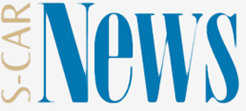Sifting Through Information in the Digital Age
Sifting Through Information in the Digital Age
Thirty years ago, tens of millions of Americans had a straightforward process for keeping up with current events. They read local newspapers each morning, and tuned into half-hour news programs such as CBS Evening News and NBC Nightly News. Sure, there were different newspapers and TV programs with various political leanings, but the information landscape wasn’t that complicated.
In the past, people could act as passive consumers of information and expect to be relatively well informed.
Fast forward to today. We live in a completely different information world—one that moves at break-neck speed, overflowing with sources, biases, and over-sensationalized headlines. Sifting through information to understand something that used to be simple—just “what’s going on in the world”— now often feels like a full-time job, complete with required knowledge (of different media outlets and their leanings) and time-consuming tasks like reading multiple versions of the same story. The Internet and associated communication technologies democratized the information landscape, almost completely removing the financial and technical barriers to entering the media arena. The cost and skill of operating a printing press has been reduced to the monthly fee of WordPress website hosting.
In many ways, this has been a positive revolution, allowing people from all walks of life and all socioeconomic classes to participate in the global information exchange, and destroying many aspects of the monopoly on information and news that previously existed.
But the democratized information landscape has also created a number of problems. It has eliminated any semblance of quality control among information; empowered small, radical voices with massive megaphones that are difficult to distinguish from “mainstream megaphones;” and exacerbated known psychological problems with how people process information they agree with and disagree with.
Where does this leave the consumer of information?
In this environment, the consumer is left struggling to make sense of the information he or she is presented with. Overwhelmed, increasingly skeptical, and unable to put forth the time required to separate signal from noise, the consumer falls prey to sensationalized headlines and misinformation — either purposeful or due to a lack of journalistic standards.
People are slowly learning that to be well informed in today’s information landscape, they must take control of how they consume and process information, acting purposefully to seek out proper sources as well as viewpoints that exist outside of their algorithmically-created media silos.
Enter my project: The World in Context.
I believe there is more that can be done from the media’s side of the table to reduce the effort and time required to be an informed citizen. I believe that a simple, concise, and accessible way to read about current events is precisely what is needed to combat the oversaturation of the digital age.
My project is low-tech and unoriginal. It’s a daily email newsletter that offers the reader a five-minute, straight-to-the-point read of what’s going on in the world—and why it matters. I summarize news events as concisely as I can, offering sources throughout, and then follow the summary with brief analysis, filling in background context and asking key questions. The information presented is a combination of “big stories of the day” and less-covered but equally important breaking news.
The World in Context is far from perfect. It is itself a single news source, written by one recent S-CAR graduate trying to avoid political bias while retaining a Jon Stewart-inspired partiality for truth and opposition to absurdity.
But I do think my newsletter adds value for consumers of information — and so far, my few hundred readers seem to agree. The project provides a baseline understanding of current events from which consumers can jump off. It moves beyond the services of an aggregator, offering important context for developments in politics, world affairs, technology, and occasionally business. There’s also a dash (but no more) of humor spread throughout.
Today, the newly elected U.S. president continues to escalate a war with the free press. Russia openly engages in disinformation campaigns for geopolitical purposes. The effects of the Internet, social media, and algorithms on people’s consumption of information show no signs of slowing.
Facts, of course, are subjective, and there is no universal truth when dealing with human conflicts. But how (and whether) people choose to consume information will always have an outsized impact on our ability to solve conflicts of all types—from political gridlock to identity struggles.
The World in Context is my humble attempt to attack that problem. I hope you’ll give it a try—and send me your thoughts on the project.




